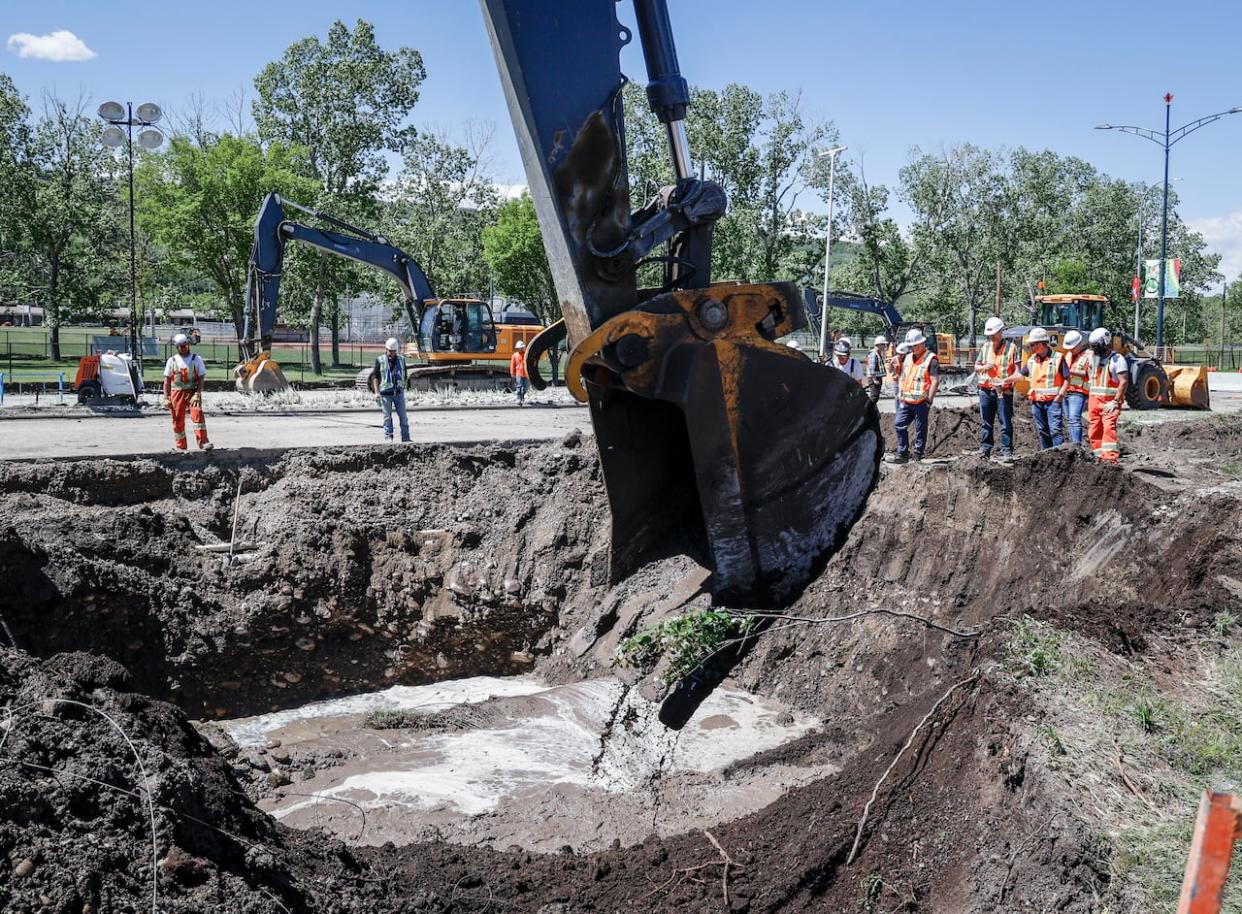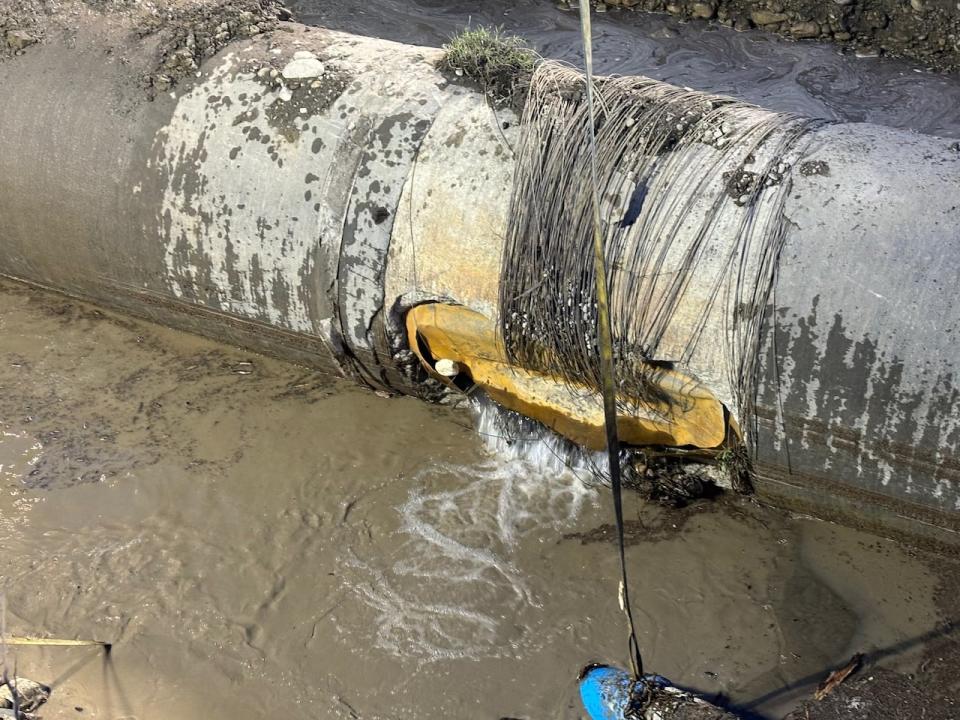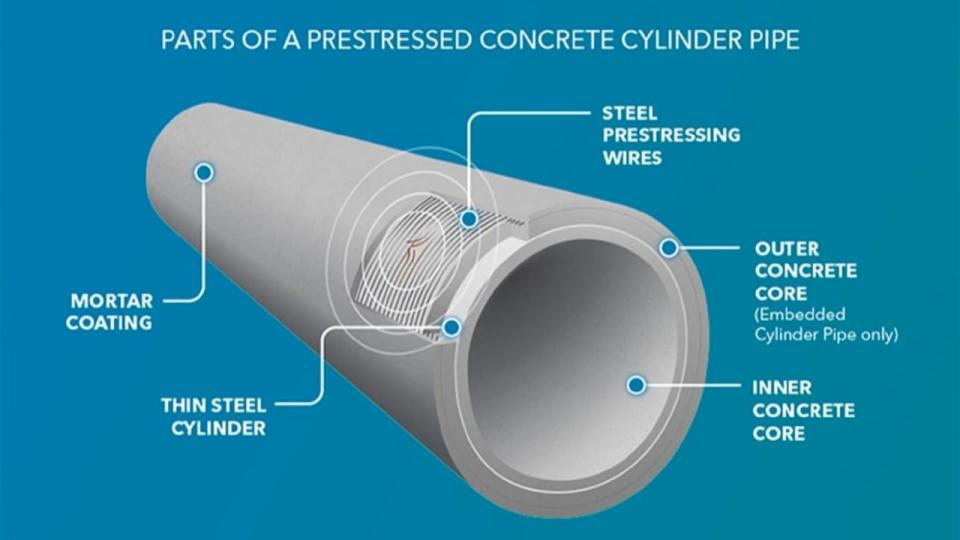City finds 3 snapped wires along feeder main, but says it's not the same as earlier 'hot spots'

City officials said on Thursday that monitoring devices along the Bearspaw south feeder main have detected another new wire snap in the pipe since easing restrictions, which makes it three wires in total that have snapped.
However, Francois Bouchart, director of capital priorities and investment with the City of Calgary's infrastructure services department, says this doesn't mean the water main will have another catastrophic failure like it did over a month ago.
"Earlier this week, we detected two additional wire snaps within the pipe, and today we detected a third," said Bouchart.
"These snaps did not mean another break is imminent. The wire coils around each 16-foot (4.8-metre) segment of pipe approximately 350 times, and the snaps were spread across three locations along the feeder main."
Bouchart says that when crews discovered five "hot spots" along the feeder main, each section of pipe that was replaced had approximately 50 individual wire snaps per segment of pipe.

The section of the Bearspaw south feeder main that ruptured is pictured here. The feeder main is a prestressed concrete cylinder pipe, a composite pipe material made primarily of concrete. (City of Calgary)
He says the city is aware it will need to create a longer-term plan for how to rehabilitate the sections of the pipe that are structurally weaker.
"The three additional snaps are not immediate cause for concern. However, they do show that the pipe is under some stress under the current flow conditions."

A diagram shows the construction of the water feeder main. (City of Calgary)
The City of Calgary has been gradually lifting restrictions on water use, though officials continue to urge residents to ease back into their regular water-use habits as crews work to fully stabilize the system.
Calgary remains under Stage 3 water restrictions as crews monitor how the city's water system will respond to the easing of water conservation measures.
On Wednesday, the city announced that all outdoor pools are exempt from the ongoing outdoor water restrictions in order to help Calgarians seek some relief from the heat.
Bouchart said on Wednesday that Calgary's distribution system is able to meet water demand as long as Stage 3 outdoor water restrictions remain in place.
On Thursday, he said that in order to move to the next step of easing water restrictions, flow will need to be increased through the pipe, but crews are moving "very cautiously."
"We don't want to risk another significant break that could set back our progress," said Bouchart.
Water usage increasing during heat wave
Water use reached 555 million litres on Tuesday, up from the 540 million litres used Monday.
On Wednesday, that number climbed to 567 million litres.
City officials say the Bearspaw south feeder main — which ruptured on June 5 — is operating at 55 per cent capacity in terms of water flow. On Thursday afternoon, Bouchart said the pipe is experiencing roughly 80 per cent pressure.
In order to increase flow, crews need to be confident the pipe will be able to withstand the increased demand for water.


